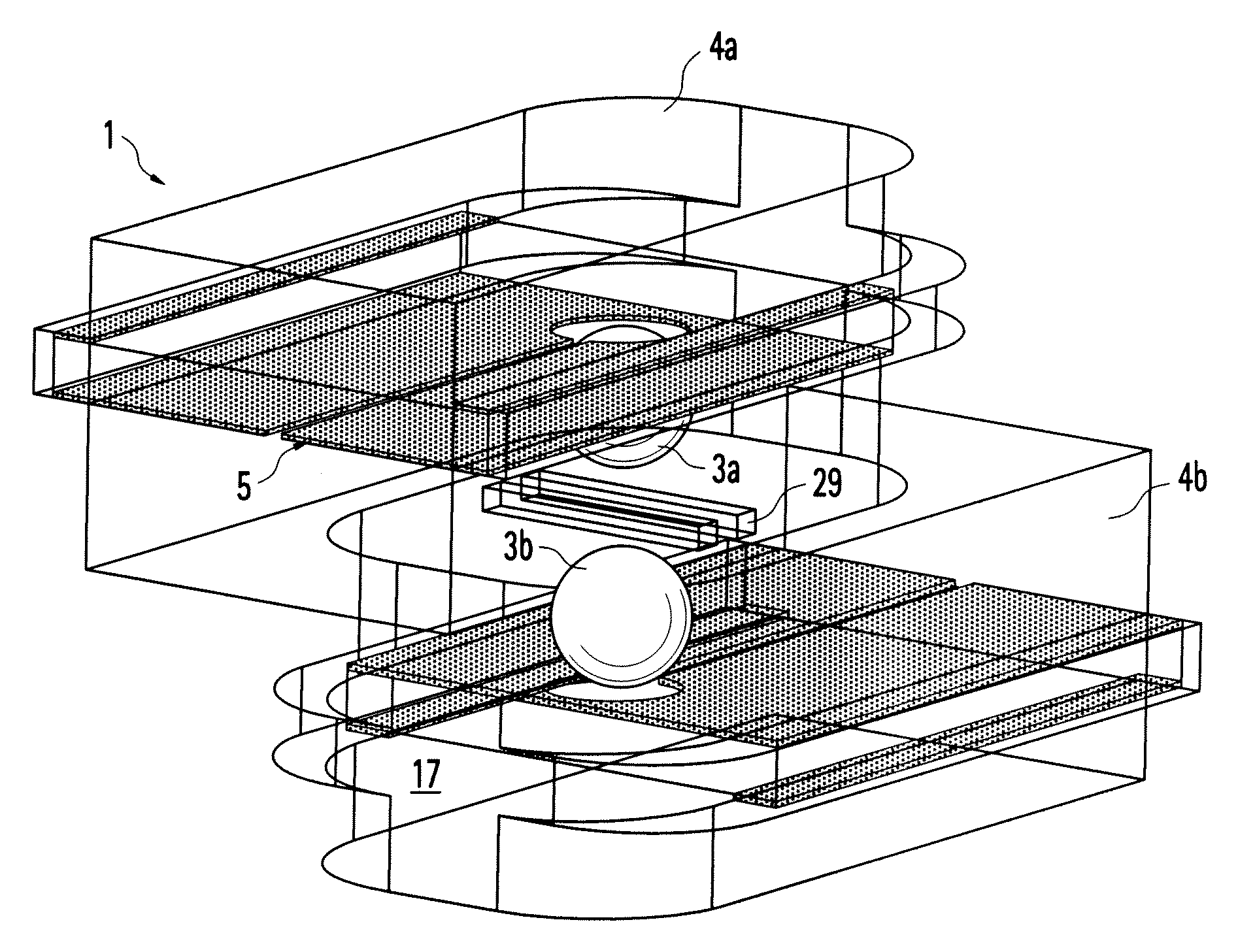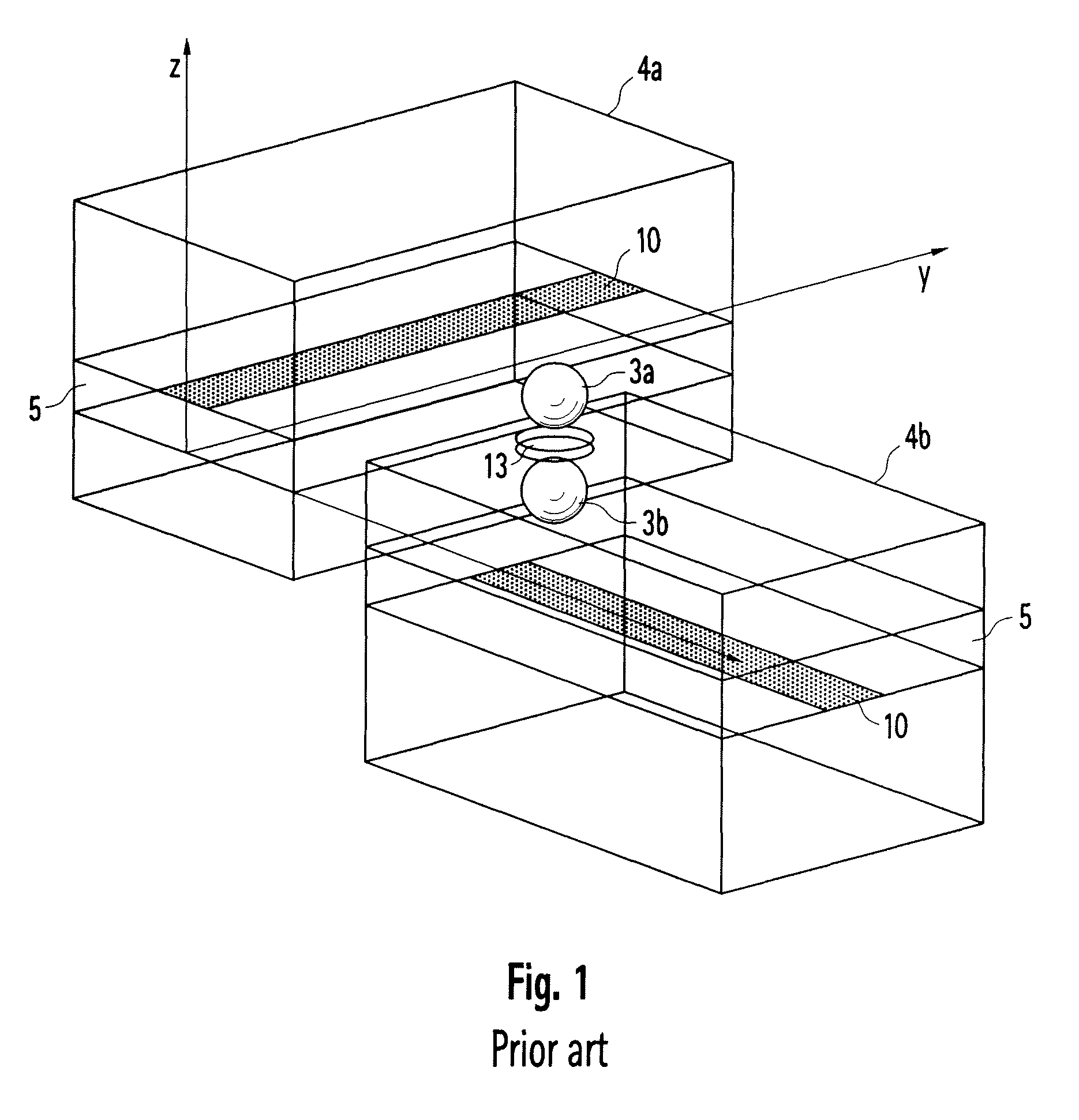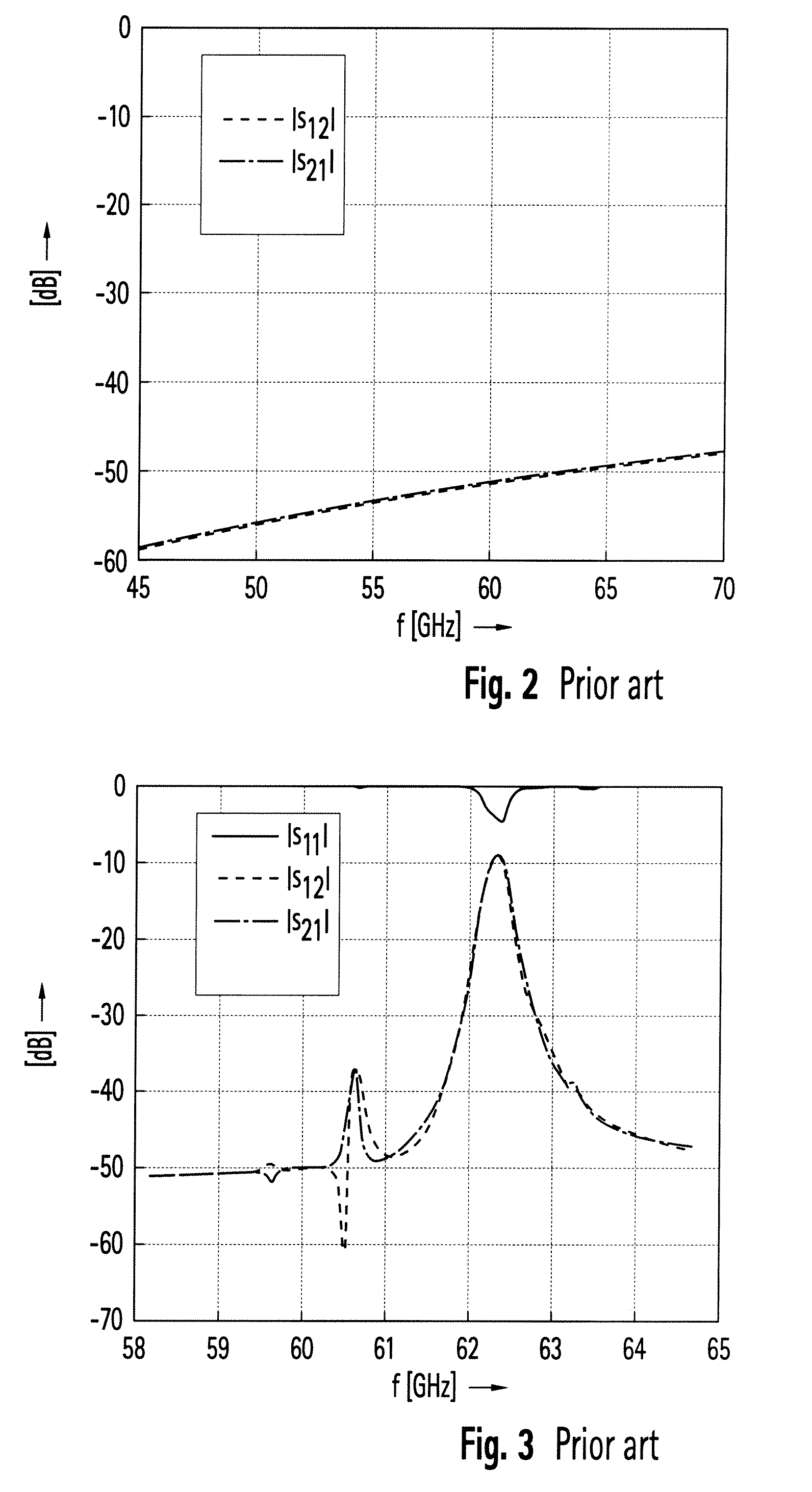Ferrite filter comprising aperture-coupled fin lines
a technology of aperture-coupled fins and filters, which is applied in the direction of resonators, basic electric elements, electric devices, etc., can solve the problems of unfavorable field distribution of wave to be decoupled, unfavorable energy transport by the incoming wave, and disturbance of auxiliary modes by coupling, so as to reduce the cost of adjustment, facilitate the assembly of filters, and avoid the cost of attaching an appropriate mounting.
- Summary
- Abstract
- Description
- Claims
- Application Information
AI Technical Summary
Benefits of technology
Problems solved by technology
Method used
Image
Examples
Embodiment Construction
[0056]By way of explanation of the magnetically-tunable filter according to the invention, the following section initially describes the structures conventional at the time of the invention and their disadvantages with reference to FIGS. 1 to 8. With reference to FIG. 9, a first exemplary embodiment of the magnetically-tunable filter 1 according to the invention will then be described in greater detail. In the description of the formerly-conventional structures and of the exemplary embodiments of the present invention, identical reference numbers will be used for functionally-identical elements.
[0057]FIG. 1 shows a formerly-conventional structure of aperture-coupled, shielded (suspended) striplines, wherein a coupling structure consisting of two resonator spheres 3a, 3b disposed one above the other and separated by an apertured diaphragm 13 is used for coupling connecting resonators.
[0058]The external DC magnetic field H0 for tuning the resonance frequency is aligned parallel to the...
PUM
 Login to View More
Login to View More Abstract
Description
Claims
Application Information
 Login to View More
Login to View More - R&D
- Intellectual Property
- Life Sciences
- Materials
- Tech Scout
- Unparalleled Data Quality
- Higher Quality Content
- 60% Fewer Hallucinations
Browse by: Latest US Patents, China's latest patents, Technical Efficacy Thesaurus, Application Domain, Technology Topic, Popular Technical Reports.
© 2025 PatSnap. All rights reserved.Legal|Privacy policy|Modern Slavery Act Transparency Statement|Sitemap|About US| Contact US: help@patsnap.com



